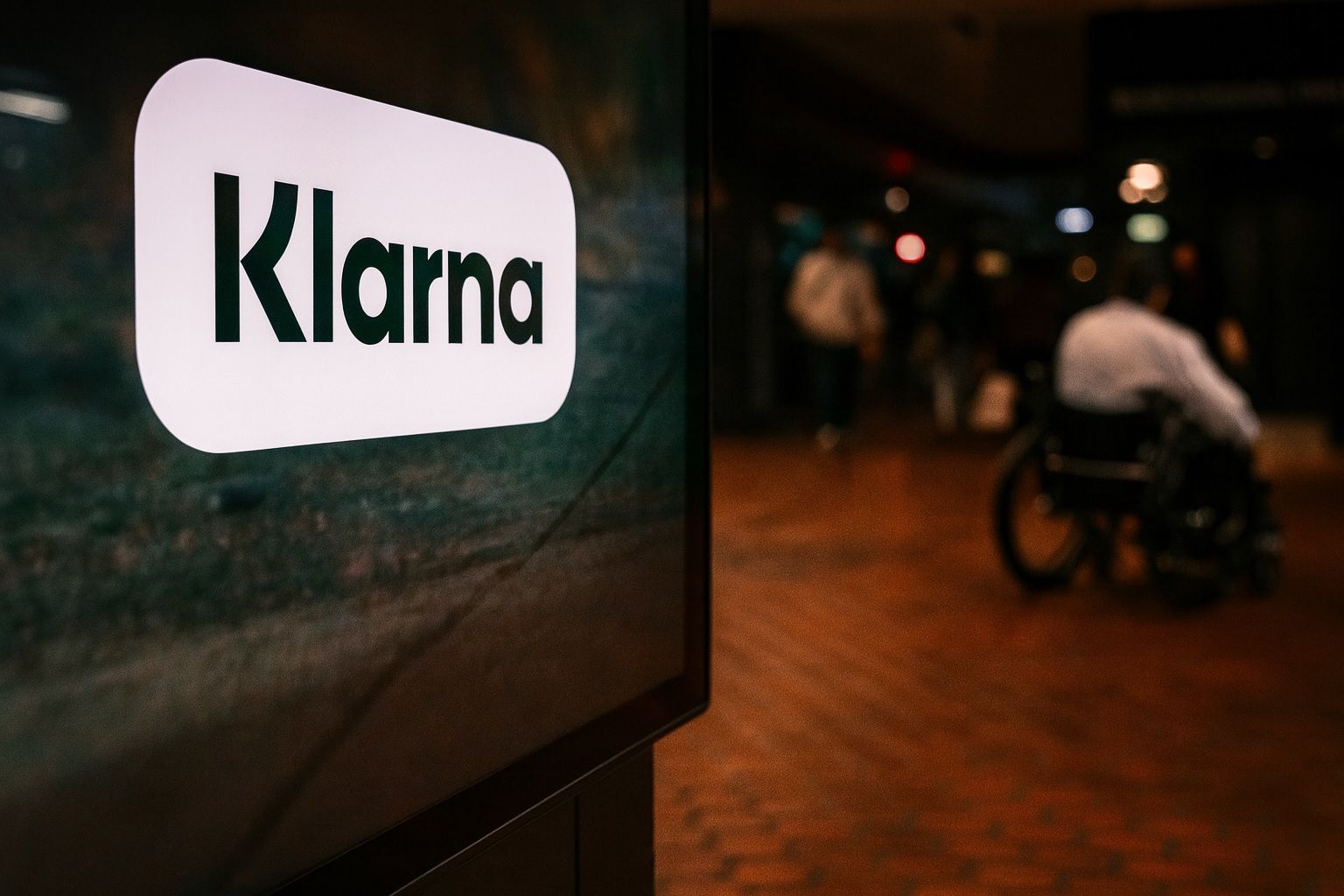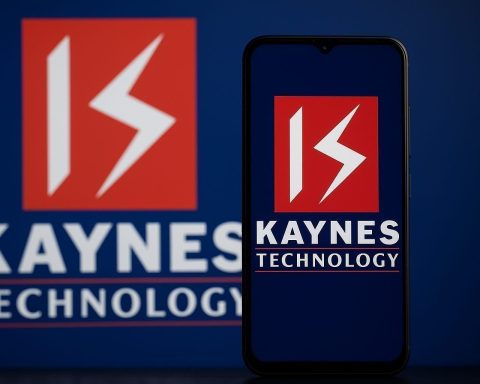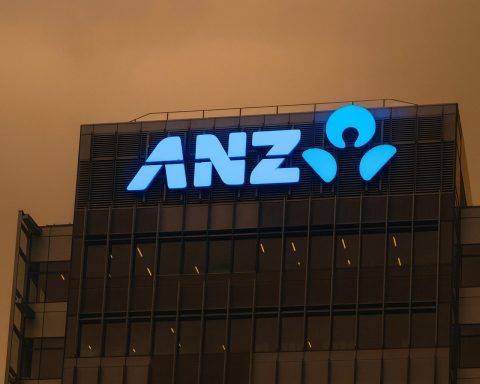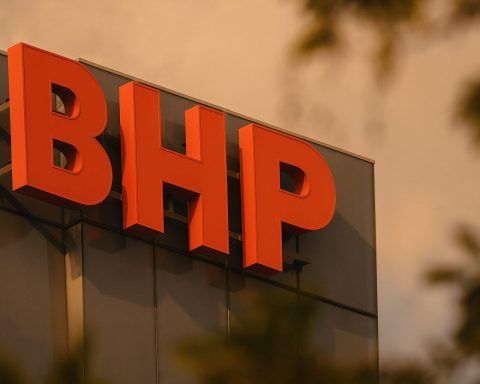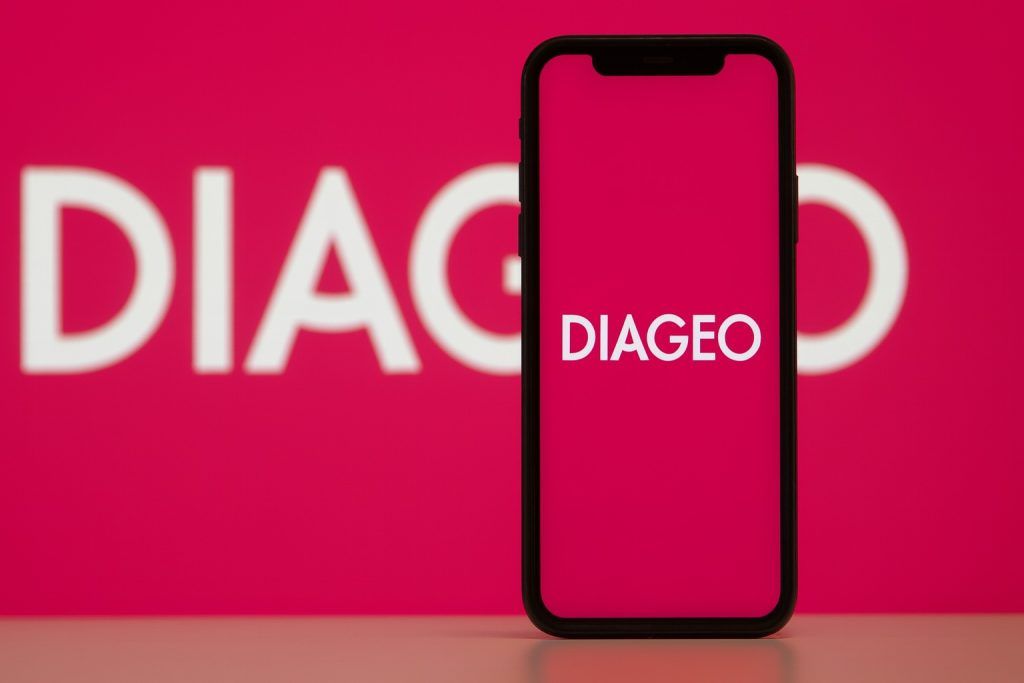- High-Profile IPO & Valuation Reset: Klarna went public in Sept 2025 at $40/share, raising ~$1.37 billion for a $15 billion valuation – a far cry from its $45.6 billion peak in 2021, but well above a $6.7 billion down-round in 2022 [1]. Shares surged ~30% on debut to ~$52 before sliding back below the IPO price [2] [3].
- Stock Below IPO Price: After an initial pop, Klarna’s stock fell ~25% amid fintech volatility. It hit lows around $35 in mid-October [4] and trades in the mid-to-high $30s as of late October – roughly a $25–28 billion market cap [5] [6], still far above its 2022 trough.
- Latest Business Moves: The Swedish buy-now, pay-later (BNPL) pioneer is expanding beyond BNPL. In October, Klarna launched a premium membership program and a Visa-powered debit card & digital wallet in the UK [7] [8]. It also scored major partnerships – e.g. Walmart chose Klarna as its new BNPL partner (displacing Affirm) [9], and a Google cloud AI deal to personalize shopping – underscoring Klarna’s growing ecosystem.
- Competitive Landscape: Klarna faces stiff competition from Affirm, Afterpay, PayPal, and even Big Tech. Afterpay (bought by Block for $29 B in 2021) and Affirm are household BNPL names [10]. U.S. rival Affirm, with a market cap near $22–24 B, has seen its stock jump ~23% in 2025 [11] [12]. PayPal and Apple have rolled out their own BNPL offerings [13]. Over 200 BNPL providers now crowd the market, though analysts expect consolidation leaving giants like Klarna, Affirm, and PayPal to dominate [14].
- Analyst Sentiment & Forecasts: Wall Street is mostly bullish on Klarna. About 10 analysts rate it “Buy” vs 8 “Hold,” with an average price target ~$50 (≈30% upside) [15]. Goldman Sachs calls Klarna “the market leader in BNPL… a new, emerging closed-loop payment scheme” [16], and Bank of America sees upside to $51/share [17] [18]. However, experts caution that rising interest rates and tighter BNPL regulation could temper near-term gains [19].
- Path to Profitability: Klarna has aggressively cut costs and is near profitability. It notched five straight quarters of operating profit through Q2 2025 [20], though one-time IPO costs kept it net-negative. Analysts at Citi expect margins to fully recover by 2026 [21], and executives aim for net profits by 2025 or 2026 [22]. Still, sustaining growth while keeping loan losses <1% and navigating compliance (a ~$50 M fine hit Klarna in 2024 for AML controls) will be key [23] [24].
A Blockbuster IPO Resets Klarna’s Valuation
Klarna’s New York IPO (Sept 2025) marked one of the year’s biggest fintech debuts. Priced at $40 per share, the offering raised about $1.37 billion and valued the Swedish BNPL leader at roughly $15 billion [25]. This valuation, while only one-third of Klarna’s pandemic-era $45.6 B peak, was more than double its 2022 low of $6.7 B after tech markets crashed [26]. The IPO was oversubscribed and priced above the initial $35–$37 range, reflecting pent-up investor demand. “$15 billion is far from disappointing”, noted Samuel Kerr, a market expert, given it topped Klarna’s target range and left investors “wanting more” [27]. Klarna’s CEO Sebastian Siemiatkowski (who kept his ~7% stake) didn’t sell shares, signaling confidence [28].
Trading kicked off with a bang – Klarna’s stock opened at $52 (a 30% jump from its IPO price) amid frenzied trading [29]. That first-day pop valued Klarna near $19.7 B [30] and underscored a thawing IPO market. Klarna’s CFO celebrated the listing as an opportunity for its 111 million users and new shareholders to “partake in [Klarna’s] journey to disrupt financial services” [31]. The IPO also boosted confidence in U.S. listings after a dry spell – Klarna became the largest Swedish firm to list in New York since Spotify in 2018 [32].
However, life after the IPO proved bumpy. Following the initial euphoria, Klarna’s stock lost altitude, mirroring broader fintech volatility. By early October, shares pulled back 22% from their $52 debut, even touching $35.60 at one point amid a market sell-off [33]. This slide brought Klarna below its $40 IPO price, disappointing some latecomers to the stock. The retreat wasn’t unique to Klarna – high-growth fintech and tech stocks broadly slumped in the same period as investors rotated out of riskier assets (exacerbated by rising interest rates).
Shares Slump, Then Stabilize Around High-$30s
Despite the dip, Klarna’s market cap remains hefty and its stock has shown signs of stabilizing. As of mid-to-late October, KLAR hovered in the high-$30s per share [34] – roughly 10–15% below its IPO price. At ~$38–$39, Klarna commands a $25–28 billion valuation [35] [36], significantly higher than its value in the depths of 2022. In mid-October the stock even set a 52-week low of $35.27 intraday [37], but it has since crawled upward. Analysts identify technical support in the mid-$30s, suggesting the worst of the post-IPO selloff may have passed [38].
Recent news has also helped shore up investor sentiment. For example, Klarna’s announcement of a new paid membership program in late October coincided with a modest stock bump (shares rose ~3% that day) as the market welcomed Klarna’s push into subscription services. Likewise, the company’s debut of a Klarna Card and digital wallet in the UK on Oct 16 – marking its evolution into deposit accounts and everyday spending – garnered attention [39] (though on launch day the stock dipped amid broader market weakness [40]). These moves signal to investors that Klarna is not standing still post-IPO, but rather doubling down on growth initiatives beyond traditional BNPL. “My investors… are going to look for growth and what we offer our customers,” CEO Siemiatkowski told Reuters, emphasizing that Klarna’s expansion (from AI features to new products) is aimed at driving long-term value, not just cutting costs [41].
Importantly, Klarna’s financial footing has improved compared to a year ago. The company aggressively slashed expenses in 2022 (laying off ~10% of staff and automating many processes) and that discipline is bearing fruit: in Q2 2025 Klarna’s revenue jumped ~20% year-on-year to $823 million, and it recorded its fifth consecutive quarterly operating profit (~$29 M) [42]. While heavy one-time charges (office closures, IPO-related stock compensation) led to a net loss of $53 M in that quarter [43], Klarna’s core business is close to break-even. Loan default rates have improved to under 1% of volume [44], indicating healthier credit performance than many peers. With over $10 billion in cash reserves on hand [45], Klarna insists it has plenty of runway to weather market ups and downs as it executes its strategy.
From BNPL to “Super-App”: New Memberships, Cards & Partnerships
Klarna isn’t just leaning on installment loans – it’s rapidly diversifying into a broader fintech platform. The company’s ambition is to become a “neobank” super-app offering shopping, payments, banking, and more [46]. In service of that goal, Klarna has rolled out new products and features in 2025:
- Global Membership Plans: On Oct 27, 2025, Klarna launched two paid subscription tiers – Premium (€17.99/month) and Max (€44.99/month) – promising a bundle of perks “without expensive credit” [47]. These plans offer cashback on purchases (0.5% for Premium, 1% for Max when using a Klarna balance), travel benefits like global insurance, curated subscription freebies (e.g. music or food delivery services), and even unlimited airport lounge access for top-tier members [48]. Klarna claims over 1 million active members already and plans to extend the program to the U.S. in the coming weeks [49]. By mimicking the rewards of premium credit cards (cashback, travel lounge access) in a debit-based offering, Klarna aims to lock in customer loyalty – and generate steady fee revenue – without pushing users into debt. This membership move is seen as a bold bid to strengthen Klarna’s ecosystem and lifetime customer value.
- Klarna Card & Digital Wallet: Earlier in October, Klarna introduced its Visa-powered debit card and “Klarna Balance” digital wallet in the UK [50]. Having secured an e-money license from regulators, Klarna now lets UK users store funds, earn deposits, and pay with a Klarna-branded Visa card. The default mode is debit, but users can opt into pay-later plans at checkout (subject to approval) – bridging the gap between BNPL and a traditional bank account [51]. This product had already gained traction in the U.S. (over 1 million sign-ups in the first 11 weeks) and now accounts for 10% of Klarna’s global transaction volume [52]. Klarna’s deposits have swelled from $9.5 B in Dec 2024 to $14 B by mid-2025 [53] as users park money in Klarna’s wallet, giving the company a low-cost funding source. By expanding into everyday banking services, Klarna deepens its relationship with users – and encroaches further on the turf of traditional banks and fintechs alike.
- AI-Powered Shopping Tools: Klarna is also harnessing artificial intelligence to enhance its platform. In a partnership with Google announced in October, Klarna is integrating Google’s cutting-edge AI (including the Vertex AI platform and forthcoming Gemini model) into its shopping app [54]. The goal is to deliver smarter product recommendations and personalized shopping content. Early pilots of Klarna’s AI-driven features boosted in-app engagement by 15% and increased orders by 50% [55] – promising signs that AI could help Klarna drive more sales for its 790,000+ merchant partners [56]. Klarna’s chief marketing officer noted that these personalized recommendations create a stickier user experience, blurring the line between a payment app and a shopping discovery platform. Beyond consumer-facing AI, Klarna’s internal AI chatbots already handle volumes of customer inquiries (doing the work of ~700 support agents) to improve efficiency. Executives say the next phase is using AI not just for cost-cutting, but to build better services that keep customers and merchants hooked [57].
- High-Profile Partnerships: Klarna has aggressively pursued big-name deals to extend its reach. A marquee win came when Walmart, America’s largest retailer, tapped Klarna as its new BNPL partner in place of rival Affirm [58]. Starting in late October, Walmart shoppers can finance purchases through Klarna for up to 3 years, directly within Walmart’s app [59]. Reportedly, Klarna sweetened the Walmart deal by granting Walmart executives warrants for ~15.3 million Klarna shares (valued around $500 M) [60]. One analyst wryly dubbed this an “expensive press release,” reflecting how far Klarna went to land such a high-profile client [61]. Klarna defends the move as a strategic coup, aiming to “be ubiquitous at checkout” and make Klarna a default payment option across retail [62]. The Walmart partnership not only brings volume but also valuable U.S. exposure in the fiercely competitive retail financing space. Klarna has inked other notable alliances too: a partnership with Qatar Airways (announced Oct 14) will integrate Klarna’s flexible payments into the airline’s booking options across 17 markets [63], extending Klarna’s travel footprint alongside existing partners like Expedia and Airbnb. And on the payments infrastructure side, Klarna deepened ties with Worldpay, Stripe, Shopify, and eBay, embedding Klarna’s BNPL at thousands of online checkouts globally [64]. Each deal expands Klarna’s acceptance network – vital for defending its ~38% share of BNPL checkouts, which is under pressure from new entrants [65].
Through these initiatives, Klarna is evolving from a pure BNPL lender into a full-spectrum fintech. The company’s active user base has swelled to 111 million shoppers across 26 countries [66], giving it a massive audience to cross-sell new services. Klarna’s vision is to become a one-stop app where consumers shop, pay, bank, and even get entertainment – capturing multiple revenue streams (interest, interchange fees, ads, subscriptions) under one roof. This strategy mirrors those of Asian “super-apps” and could set Klarna apart in Western markets if successful.
BNPL Wars: Klarna vs. Affirm, Afterpay, PayPal – and Regulators
Klarna ascended as a pioneer of “buy now, pay later” at checkout, but it no longer has the field to itself. Competition in BNPL has intensified dramatically:
- Affirm: U.S.-based Affirm (ticker AFRM) has been Klarna’s closest rival in scale and mindshare. Affirm went public in early 2021 and initially soared before a downturn in 2022. In 2025, however, Affirm’s stock has rebounded ~23% year-to-date [67] as the company, like Klarna, cuts losses and focuses on sustainable growth. Affirm’s market capitalization sits around $22–24 billion [68], comparable to Klarna’s, although Affirm’s revenue base is smaller. Affirm built its brand partnering with big U.S. merchants (Amazon, Shopify) and by positioning itself as a transparent, no-fee financing alternative. Both Klarna and Affirm are now converging in strategy – emphasizing higher-quality borrowers, lengthier loan options, and integration into everyday spending (Affirm offers a debit+ app and is testing its own subscription features). Notably, Klarna’s win of Walmart was a direct blow to Affirm, which had previously powered Walmart’s installment plans. The BNPL space isn’t winner-take-all, but investors are watching whether Klarna can continue poaching marquee clients.
- Afterpay (Block): Australia’s Afterpay, another BNPL trailblazer, was acquired by Jack Dorsey’s Block (formerly Square) in 2021 for a hefty $29 billion [69]. That deal integrated Afterpay into Block’s ecosystem (Cash App and Square’s merchant network). While now effectively an arm of a larger public company, Afterpay’s influence in BNPL – especially in Asia-Pacific – remains significant. Klarna and Afterpay both target young, debt-averse shoppers who prefer installment plans over credit cards. However, with Block’s backing, Afterpay may be more insulated from market pressures (Block wrote down Afterpay’s value post-acquisition amid the 2022 tech slump). Klarna still operates independently, which means it must prove itself to public investors quarter by quarter.
- PayPal & Big Tech: Tech giants have muscled into the installment turf. PayPal launched its own BNPL offering (“Pay in 4”) and, leveraging its ubiquitous payments platform, quickly became one of the top BNPL players in the U.S. [70]. Apple rolled out Apple Pay Later in 2023, enabling iPhone users to split purchases into installments seamlessly via Apple Wallet. Amazon partners with Affirm for financing. Even traditional banks (Chase, Citi) are adding split-pay options at checkout. This proliferation of BNPL providers has been a double-edged sword: it validates consumer demand (more merchants offer BNPL than ever), but also erodes Klarna’s market share at the margins [71]. Klarna still claims a leading ~38% share of global BNPL checkouts [72], but that lead is being tested by deep-pocketed competitors riding on vast user bases. To keep its edge, Klarna will have to continue innovating (hence its push into AI, new products, and partnerships).
Meanwhile, regulators are closing in on BNPL’s rapid rise. Authorities in the UK, EU, and U.S. have all raised concerns that BNPL, if left unchecked, could encourage excessive consumer debt, especially among young shoppers. New rules are being formulated to mandate affordability checks and credit bureau reporting for BNPL loans [73]. In anticipation, Klarna has already tightened its lending criteria and begun reporting BNPL usage to credit agencies in many markets [74] – moves aimed at promoting responsible borrowing and staying a step ahead of regulation. Still, regulatory scrutiny adds another layer of uncertainty: for example, Sweden’s financial watchdog fined Klarna ~$50 million in 2024 over anti-money-laundering control gaps [75], showing that fast-growing fintechs are on watchdogs’ radar. Any new compliance requirements could raise Klarna’s operating costs or slightly slow its growth (by making loan approvals more stringent). On the flip side, sensible regulation could legitimize BNPL in the long run and drive weaker players out, potentially benefiting established leaders like Klarna that can adapt and absorb the compliance overhead [76].
Overall, Klarna appears well-positioned in the BNPL wars due to its global scale and diverse offerings. It operates in 45 countries (far beyond Affirm’s primarily U.S. focus) and has built brand loyalty through its app and browser extension that let users “Pay in 4” virtually anywhere. Its move into banking services (cards, deposits) could further differentiate it. But the company must remain vigilant: the combination of intense competition and looming regulations means the BNPL landscape of 2026 may look very different than that of the free-wheeling 2020–21 boom.
Wall Street’s Take: Cautious Optimism with Upside Ahead
Despite the recent stock dip, analysts are mostly upbeat about Klarna’s prospects. In early October, a wave of major brokerages initiated coverage on Klarna, generally with buy ratings. As of late October, Klarna has a consensus rating of “Moderate Buy” – 10 analysts call it a Buy and 8 call it a Hold [77]. The average 12-month price target is around $50 per share [78], implying roughly 30% upside from current levels. Notably, Bank of America set a bullish high target at $51 [79], while Sanford Bernstein analysts started coverage at “Market Perform” with a $45 target – indicating a range of views on how quickly Klarna can regain its IPO price.
Analysts bullish on Klarna argue that the market is underestimating its strengths. Goldman Sachs analysts wrote in a note, “We view Klarna as the market leader in BNPL solutions, with a particularly strong franchise in Europe, where we believe Klarna is a new, emerging closed-loop payment scheme.” [80] In other words, Klarna’s large two-sided network of consumers and merchants could evolve into a self-contained payments ecosystem (much like how PayPal leveraged its network effects). Being the dominant BNPL player in Europe gives Klarna scale advantages, and its expansion in the U.S. provides a huge growth runway if executed well. J.P. Morgan has likewise lauded Klarna as a “fintech pioneer” that is successfully expanding beyond its original niche [81]. Many on Wall Street also point to Klarna’s rare trait of achieving operating profitability (a feat few high-growth fintech unicorns have managed) as a sign of discipline that bodes well for the future [82] [83]. “Klarna still trades at a healthy discount to U.S.-based rival Affirm… presenting a longer-term opportunity to close the gap,” some analysts note [84], suggesting Klarna’s current valuation multiples are relatively modest and could rise if it delivers consistent results.
That said, nearly every analyst also flags risks that temper their optimism. Citigroup analysts warn that Klarna’s push into longer-term loans – its “Fair Financing” business – could pressure short-term profits as operating costs and credit risk in that segment ramp up [85]. They expect those margins to improve by 2026, but in the meantime, rising interest rates have increased Klarna’s funding costs, squeezing the margins on BNPL loans made to customers [86]. If central banks keep rates high, Klarna might face trade-offs between absorbing higher costs or passing them to consumers/merchants (which could dampen demand). Morgan Stanley analysts emphasize that Klarna’s long-term success in markets like the U.S. will hinge on its “ability to attract and retain higher-income, higher-FICO consumers.” [87] In the past, BNPL services have skewed toward younger users who may have lower credit scores; moving “upmarket” to more creditworthy, affluent customers could improve loan performance but may require different marketing and offerings. Additionally, some skeptics point out that BNPL growth could slow if consumers pull back spending in a weaker economy or if credit conditions tighten. For now, however, consumer demand remains robust – BNPL usage spiked during the pandemic and has become a preferred payment option for many Gen Z and Millennial shoppers over traditional credit cards.
Looking at the next few quarters, several catalysts are on the horizon. Klarna’s first earnings report as a public company (for Q3 2025, expected in November) will be closely watched for any surprises in growth or credit metrics. The upcoming holiday shopping season will also be pivotal. Analysts say a strong holiday quarter – with e-commerce sales expected to rise – could boost Klarna’s transaction volumes and revenue, potentially validating bullish forecasts [88]. On the other hand, any spike in loan defaults post-holiday or a soft holiday sales season could raise red flags. Another event to watch is the IPO lock-up expiration in March 2026 (180 days post-IPO), when early investors and employees can finally sell shares. Such expirations sometimes create stock volatility or downward pressure if many insiders cash out. Investors will be keen to see if Klarna’s backers hold onto shares (signaling confidence) or take profits after the lock-up.
Despite near-term noise, most analysts covering Klarna have a positive long-term view. According to TipRanks data, the stock carries a “Strong Buy” consensus and price targets clustering in the high-$40s to low-$50s [89]. Achieving that would mean Klarna stock reclaiming, or even exceeding, its IPO price within 12 months – a recovery that bulls believe is attainable if the company continues executing well. “Overall, the Street sees long-run growth potential outpacing short-term cost pressures,” notes TechStock² in an analysis [90], capturing the general sentiment that Klarna’s growth story (especially in the U.S. and in new business lines) outweighs the current growing pains and macroeconomic headwinds.
The Road Ahead: Can Klarna Fulfill Its Fintech Promise?
As of October 30, 2025, Klarna finds itself at a crossroads – a newly public tech company straddling the line between lofty expectations and lingering uncertainties. In the short term, much will depend on how well Klarna navigates its early quarters as a public entity. Solid earnings, continued user growth, and a smooth holiday season could reaffirm investor confidence and potentially lift the stock out of its post-IPO trough. Broader market conditions will also play a role; any easing of interest rates or resurgence in tech stocks could provide a tailwind, whereas a “risk-off” turn on Wall Street might keep Klarna’s share price subdued [91].
In the long run, Klarna’s challenge is to transform from a niche BNPL lender into a comprehensive digital finance platform – essentially, to answer the question: what comes after BNPL? The company’s recent moves (from bank-like services to AI-driven shopping features) indicate it is thinking bigger. If Klarna can leverage its massive user base and troves of consumer data to successfully cross-sell products – ads, banking, loyalty programs, travel services – it could unlock new revenue streams far beyond the simple merchant fees of BNPL. Many industry experts believe Klarna has a shot at achieving a valuation closer to its heyday (or even higher) if it pulls off this evolution [92]. As Goldman Sachs analysts put it, Klarna is morphing into “a new, emerging closed-loop payment scheme” with a loyal network of consumers and merchants [93]. In an optimistic scenario, Klarna’s ecosystem could start to resemble that of PayPal or Apple’s – where users stick around for the convenience and perks, and the company reaps the benefits of a captive audience.
However, Klarna must also grapple with risk factors that could stall its momentum. Competition will remain fierce – rivals are not standing still, and any misstep by Klarna could be an opening for others. The regulatory environment is still taking shape; new rules could change the economics of BNPL or introduce compliance costs that favor only the largest players. Additionally, the consumer credit cycle is unpredictable: an economic downturn or higher unemployment could test the resilience of Klarna’s loan book, even with its improved credit checks. The company’s ability to maintain high growth and healthy credit metrics as it scales will be under the microscope.
For now, Klarna can take solace in having regained access to public capital and in proving skeptics wrong about the viability of a fintech IPO in 2025. Its stock may be below the IPO price, but the year is far from over – and Klarna’s own CEO likened the IPO to “a little bit like a wedding… then life goes on.” [94] In other words, the real work begins after the ceremony. With a “moderate buy” rating on Wall Street and tangible progress toward profitability, Klarna enters its post-IPO life with cautious optimism surrounding it.
Will Klarna become the next $100 billion fintech giant or face growing pains that temper its ascent? The consensus among analysts is leaning positive, but only Klarna’s execution in the coming years will ultimately determine if it can live up to the hype. For investors and consumers alike, Klarna’s journey from a BNPL wunderkind to a diversified financial powerhouse will be one of the most closely watched stories in fintech. The company has shown it can adapt and innovate – now it must prove it can thrive in the public markets and outshine the competition, one installment at a time.
Sources: TechStock² (ts2.tech); Reuters; MarketBeat; Klarna investor releases; and other financial news outlets [95] [96] [97] [98] [99].
References
1. ts2.tech, 2. www.reuters.com, 3. ts2.tech, 4. www.reuters.com, 5. ts2.tech, 6. ts2.tech, 7. www.stocktitan.net, 8. www.stocktitan.net, 9. ts2.tech, 10. ts2.tech, 11. ts2.tech, 12. www.reuters.com, 13. ts2.tech, 14. ts2.tech, 15. www.marketbeat.com, 16. www.reuters.com, 17. www.marketbeat.com, 18. www.marketbeat.com, 19. ts2.tech, 20. ts2.tech, 21. www.reuters.com, 22. ts2.tech, 23. ts2.tech, 24. ts2.tech, 25. ts2.tech, 26. ts2.tech, 27. www.reuters.com, 28. www.reuters.com, 29. www.reuters.com, 30. www.reuters.com, 31. www.reuters.com, 32. www.reuters.com, 33. www.reuters.com, 34. ts2.tech, 35. ts2.tech, 36. ts2.tech, 37. www.marketbeat.com, 38. ts2.tech, 39. www.stocktitan.net, 40. www.stocktitan.net, 41. ts2.tech, 42. ts2.tech, 43. ts2.tech, 44. ts2.tech, 45. ts2.tech, 46. ts2.tech, 47. www.stocktitan.net, 48. www.stocktitan.net, 49. www.stocktitan.net, 50. www.stocktitan.net, 51. www.stocktitan.net, 52. www.stocktitan.net, 53. www.stocktitan.net, 54. ts2.tech, 55. ts2.tech, 56. ts2.tech, 57. ts2.tech, 58. ts2.tech, 59. ts2.tech, 60. ts2.tech, 61. ts2.tech, 62. ts2.tech, 63. www.stocktitan.net, 64. ts2.tech, 65. ts2.tech, 66. ts2.tech, 67. www.reuters.com, 68. ts2.tech, 69. ts2.tech, 70. ts2.tech, 71. ts2.tech, 72. ts2.tech, 73. ts2.tech, 74. ts2.tech, 75. ts2.tech, 76. ts2.tech, 77. www.marketbeat.com, 78. www.marketbeat.com, 79. www.marketbeat.com, 80. www.reuters.com, 81. www.reuters.com, 82. ts2.tech, 83. ts2.tech, 84. www.reuters.com, 85. www.reuters.com, 86. ts2.tech, 87. www.reuters.com, 88. ts2.tech, 89. ts2.tech, 90. ts2.tech, 91. ts2.tech, 92. ts2.tech, 93. ts2.tech, 94. ts2.tech, 95. ts2.tech, 96. www.reuters.com, 97. www.stocktitan.net, 98. ts2.tech, 99. www.marketbeat.com
